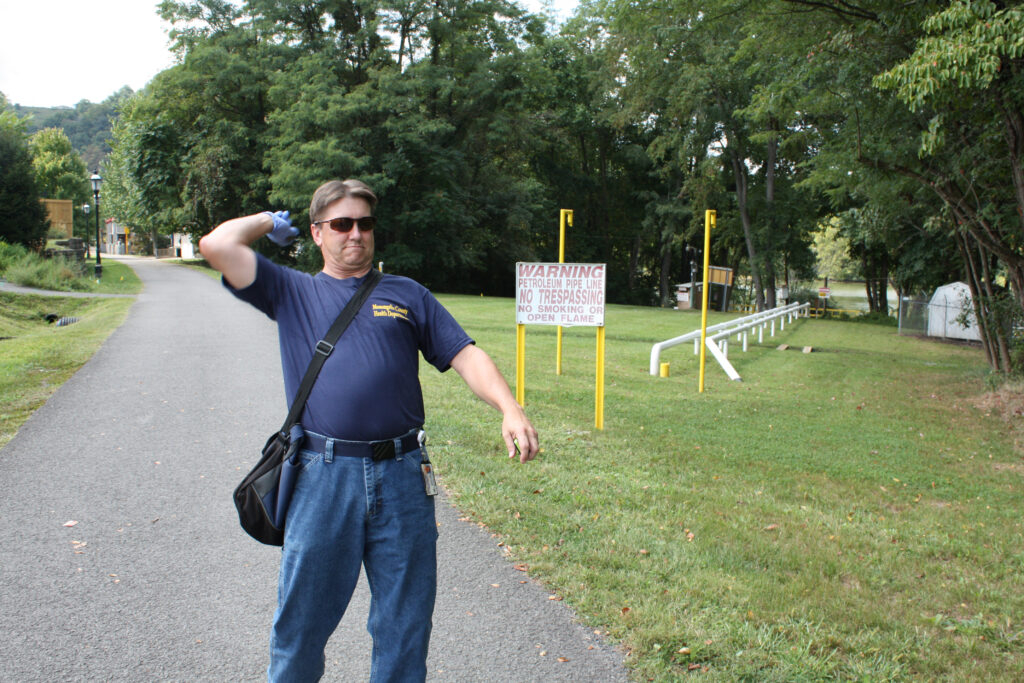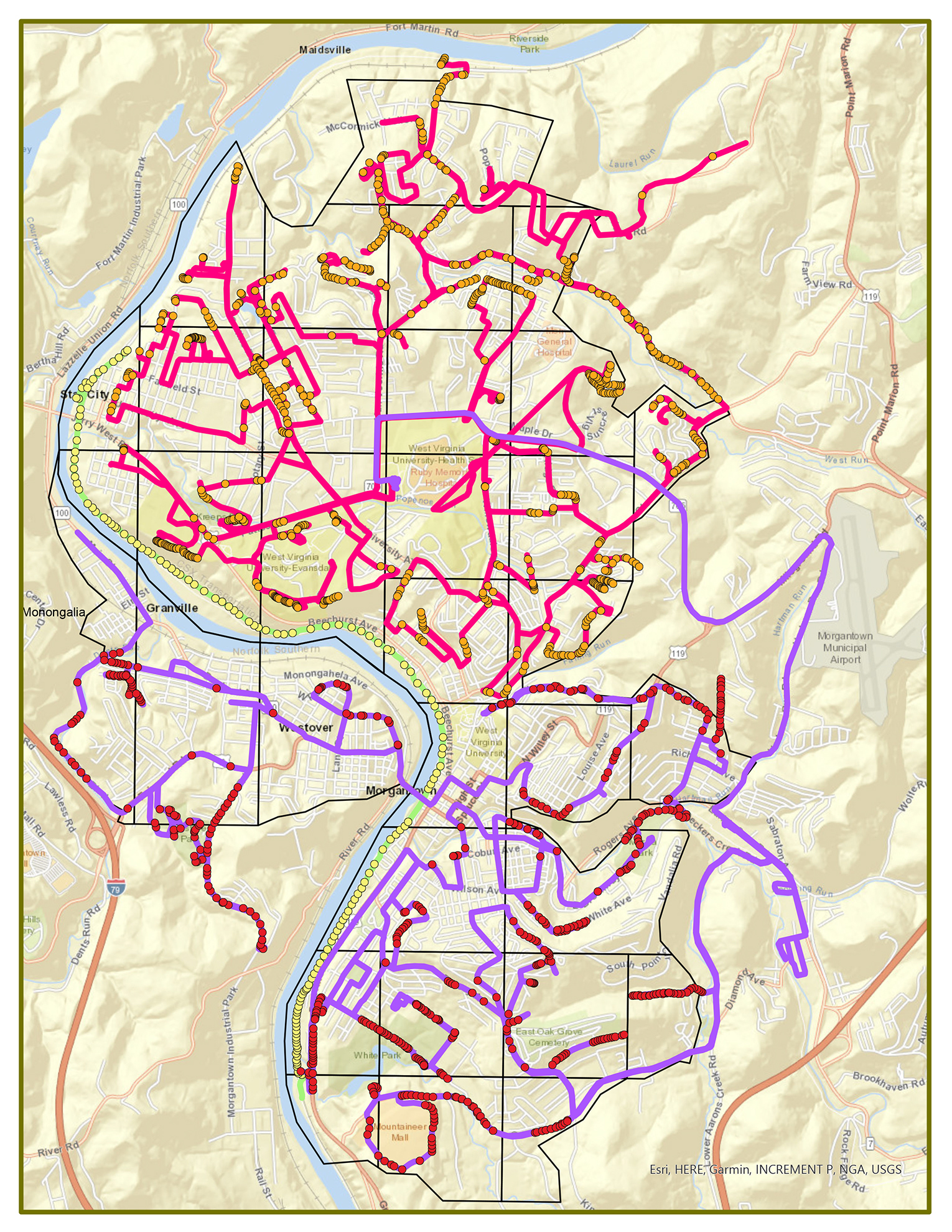Rabies vaccine program has proven successful
Newsroom@DominionPost.com
Even though two cases of rabies popped up in late September in Monongalia County for the first time in 2020, rabies vaccine baiting conducted in 2019 seems to have been successful.
“Not all raccoons receive the vaccine in the first year,” said Sam Mills, a West Virginia wildlife and rabies biologist for the U.S. Department of Agriculture’s Animal and Plant Health Inspection Service. “It ends up being in the neighborhood of the 25-30% level.”
But two cases of rabies in the ninth month of the year beats 2019, when Monongalia County had 20 reported cases of rabies, starting in February and going all the way until New Year’s Eve.
It was that level of rabies activity that led Monongalia County Health Department to request that USDA APHIS move the zone where the Oral Rabies Vaccine bait drop is conducted annually in late summer via fixed-wing aircraft east to cover most of the county, instead of just the western tip.
And it’s also why MCHD spent about $1,600 on 1,080 hand baits that sanitarians from its Environmental Health program tossed along the trail, in parks and other wooded areas of Morgantown.
“We’re such a proactive county that we purchased them last year,” said Jon W. Welch, MCHD Environmental Health program manager.
According to the Centers for Disease Control and Prevention (cdc.gov/rabies), rabies is a fatal viral disease that can spread to people and pets if they are bitten or scratched by a rabid animal. In the United States, rabies is mostly found in wild animals such as bats, raccoons, skunks and foxes. In many other countries, dogs still carry rabies, and most rabies deaths in people around the world are caused by dog bites.
The USDA APHIS baiting program has existed in the U.S. since 1990, according to information at aphis.usda.gov/aphis/ourfocus/wildlifedamage/programs/nrmp/ct_rabies_vaccine_info.

The program consists of two methods of distributing baits. Airplanes drop coated sachets that drift down to land without causing damage to anything on the ground. The hand baits are square and heavier so they can be more easily thrown, Mills said. While pet owners should try to keep their animals away from the baits, they won’t cause them to get sick, other than an upset stomach if too many are consumed.
So far this year, Mills noted, USDA APHIS dropped nearly 46,000 coated sachets in rural areas of Monongalia County, while nearly 1,400 hand baits were distributed in Morgantown. The air drop took place in late August as well.
This year, Welch had the ORV order ready again when he was informed that USDA APHIS would buy the baits for MCHD to distribute.
“When we looked at the data, we looked at how many positives had been in the area, so that is how the decision is made on where to move the zone to,” Mills said. “And this year, it was determined that it was a good management decision to continue to bait that.”
Because the goal is to keep raccoon rabies, which is endemic on the East Coast, from spreading further west, and because Monongalia County falls on the border of this zone, “It was decided from a national standpoint that it makes sense to foot the bill for it,” Mills said.
On Aug. 24, two teams of registered sanitarians drove and hiked around Morgantown to throw out the baits, while Welch walked on the rail-trail from the University Motors area through downtown to the Edith Barill Riverfront Park & Trail in Star City.
This year, the team had 300 additional baits — 1,386 — to distribute, compared to 2019. “I would walk and every 20 seconds, I would throw one,” Welch said.
Then he would activate one of the GPS clickers that sanitarians carried to register each throw, giving MCHD and the USDA a clear picture on a map of how many baits were dropped and where each one was.
“We use a geographic information system program and put quadrants all over the city,” Mills said.
Each quadrant is assigned a number of baits. “If there is ever a question, we can map them out,” he added. “The data helps us identify holes … maybe trees we’re not getting to. We review the data later and go back and say, ‘Here is an area we missed, how can we get in there?’ The clickers mark the spot so we have mapped all of that out.”
Going into this year’s aerial and hand baiting, Monongalia County had no reported cases of rabies, in contrast to 2019. That changed in late September. A resident called MCHD Environmental Health after a groundhog chased pet cats. The groundhog was killed and sent to the West Virginia Office of Laboratory Services in Charleston and was found to have had rabies.
Around the same time, USDA APHIS, which conducts enhanced surveillance on raccoons and other wildlife known to get rabies, picked up a raccoon about 4 miles west of Core. “It was a sick-acting animal and we received a call,” Mills said. Out of 105 animals collected by USDA APHIS in 2020 from the county, it so far is the only one that has tested positive for rabies.
Because there was no exposure to a human or another animal, the case didn’t have to go through Monongalia County Health Department, Mills added.
While happy with the success of the 2019 rabies vaccine baiting, health officials note that it must be sustained to keep the virus at bay. The aerial baiting was done from 2001 to 2010, Welch said. MCHD did hand baiting until 2005, and then USDA APHIS took it over until 2010. MCHD then conducted hand baiting one more time, in 2014.
“And then there was nothing until 2019 when we started again because of the big number of positives,” he added. “We’re obviously relieved that the ORV air drop, combined with hand baiting, has obviously made an impact on positive cases. When you go from 20 to two cases, that’s pretty good.”
Tweet @DominionPostWV




